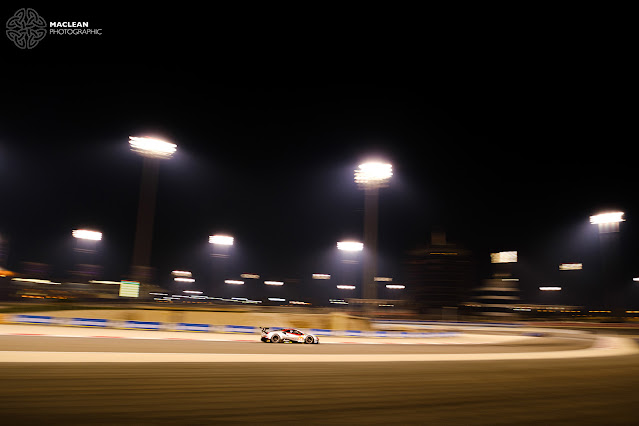Going Wide - Testing the New Fujinon XF10-24mm f4R OIS WR in Bahrain
Regular readers of my ramblings will know that the Fujinon XF10-24mm f4 has been a workhorse for my style of photography since I purchased the lens back in May 2014. In May I wrote a feature on my first six years with this lens using it for landscape, sport and wildlife.
Recently Fujifilm announced a Mark 2 version of this lens, with a marked aperture ring and, most importantly for my work, weather resistance. As an X Photographer I contacted Fujifilm UK and they sent me a test lens to try out in Bahrain where I was working on the final round of the 2019/20 FIA World Endurance Championship.
What's The Difference?
Size wise the lens are very similar, as can be seen in the image above where the new lens is on the left and the older version on the right. The newer lens is slightly less 'chunky' but the overall height is unchanged.
On the side of the MK2 the two switches that control OIS and Auto/Manual aperture have gone and the aperture ring is now marked with F4 to F22 and an A setting. The A setting also gets a lock so it inadvertently go to a manual setting, which is a good addition.
I was wondering why Fujifilm removed the OIS on/off switch as when I shoot landscapes with the camera attached to a tripod, the rule is usually to switch OIS off. However, the tests I did, with the camera strapped to a tripod, didn't produce any OIS induced 'shake'.
To be honest half the time I forget to switch off the OIS on my MK1 lens and I never had a problem with that in the many years I have been shooting with the XF10-24mm.
The build quality is as you would expect for an XF lens, it is solid and feels like a quality piece of optical engineering. The results were also as expected - impressive, but more of that later.
The one thing that I, and may others, have complained about is the white writing on the front of the lens. In certain light, when using filters, the writing can be reflected in the back of the filters and appear on the final image. Annoyingly, the new lens retains this white writing on the front and low and behold in Bahrain, I was getting reflections in the viewfinder.
As you can see in the image below I have blacked out the writing on my original lens with a permanent black marker and I will doing exactly the same with the new lens when I purchase a production model from Fujifilm.
The Results
In Bahrain I was using a pair of Fujifilm X-T4s, so one was fitted with the XF10-24mm f4R OIS WR before I went trackside. The other camera was fitted with the XF200mm f2.
The wind was blowing steadily and the circuit is in the middle of the desert, so it was fairly dusty. When working in Bahrain I keep lens changes to a minimum out in the field because of sand, so the importance of the WR moniker on the lens in keeping the sand out was upmost in my mind.
During the day the 10-24mm was fitted with a Haida M10 Filter holder for a circular polariser and a Red Diamond 0.9 (3 stop) ND grad.
Now I do get asked why do I use a wide angle lens for motorsport, am I not too far away from the action? The FIA World Endurance Championship is by definition a world championship, so we visit different parts of the globe. If you just use a long telephoto and shoot the cars tight on a corner you could be anywhere in the world. The idea is to tell a story and the wide angle lens gives me the ability to put the cars in the environment that they are racing in. That's why my original 10-24mm is so well used, it goes everywhere with me.
Also there are always places where you can get close to the track to use a wide angle lens (see the main image at the top of the page). That is the advantage of a media pass.
The AF worked quickly and smoothly and is a definite improvement over the original lens. I also shoot videos with the XT4 at the events, mainly driver interviews. I used the 10-24mm for a couple of interviews - I usually use my XF16-55mm f2.8 - because I was in a tight area with two drivers being interviewed after qualifying. The AF is quiet and quick, so no complaints there.
Conclusion
This is an almost perfect upgrade to a great lens. If it hadn't been for the white writing being retained on the front of the lens it would be A++ to Fujifilm, but now it is just an A+. I will certainly be buying one when the first stock arrives in the UK.
Here are a selection of images using the XF10-24mm f4R OIS WR -
-------------------------------------------------------------------------------------------------------------
Jeff Carter is a Haida Filters Co-Photographer - CLICK HERE to see his profile
MacLean Photographic runs Photography Workshops in East Lothian and the Borders of Scotland.
CLICK HERE for more details and availability.




















Comments
Post a Comment